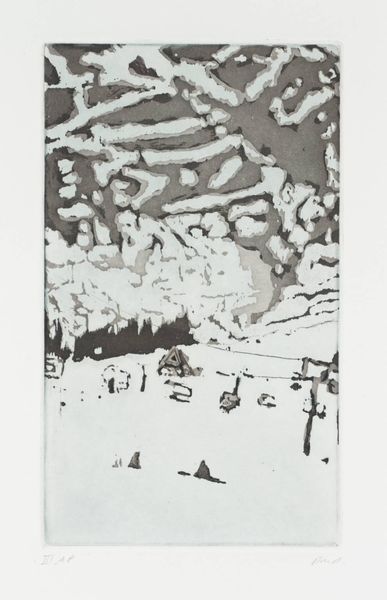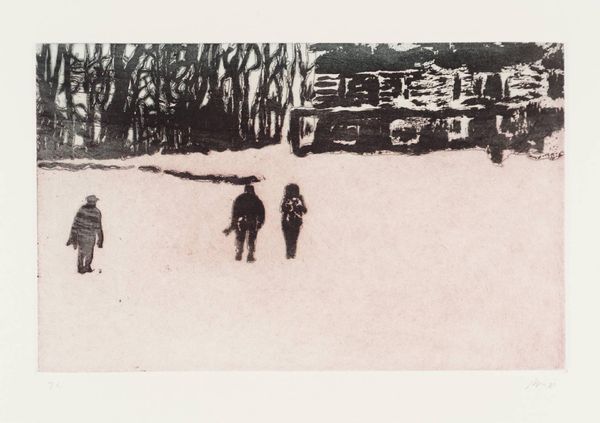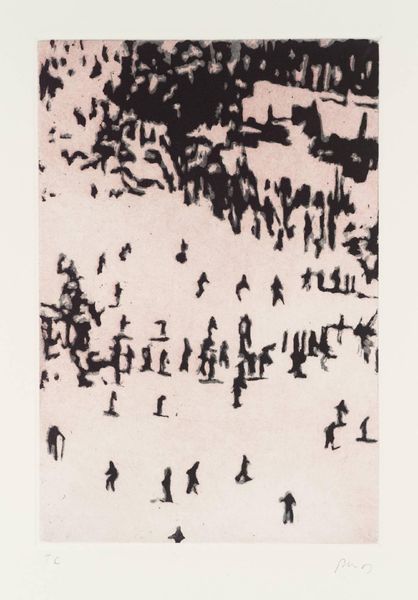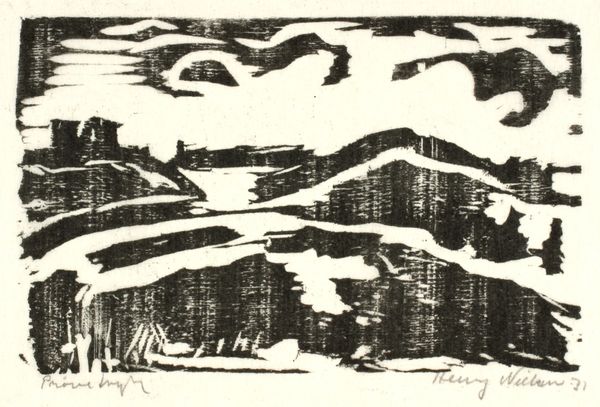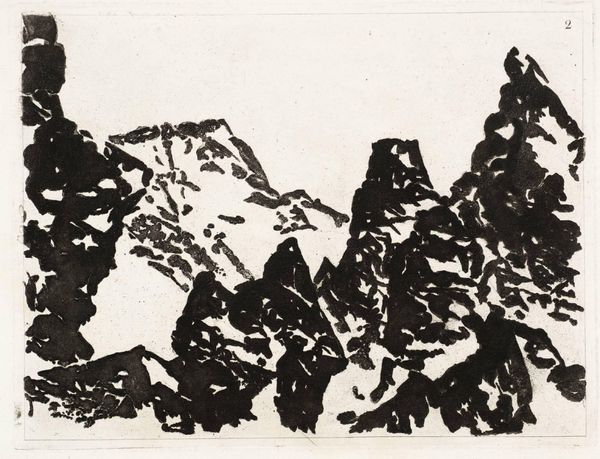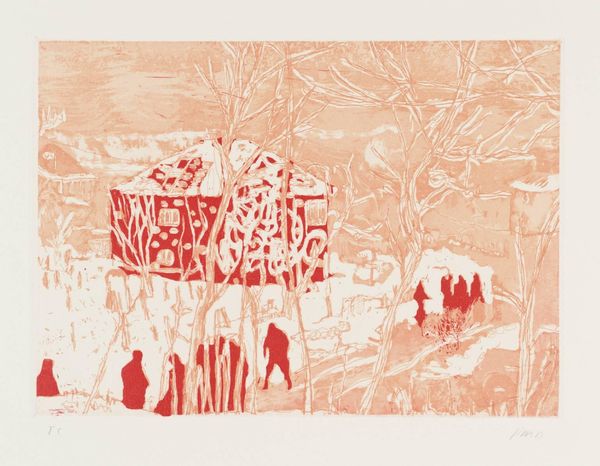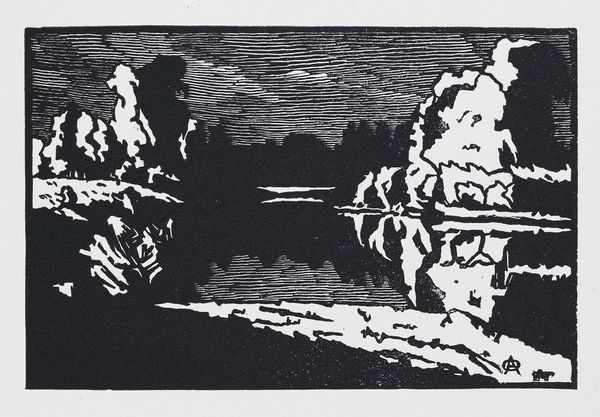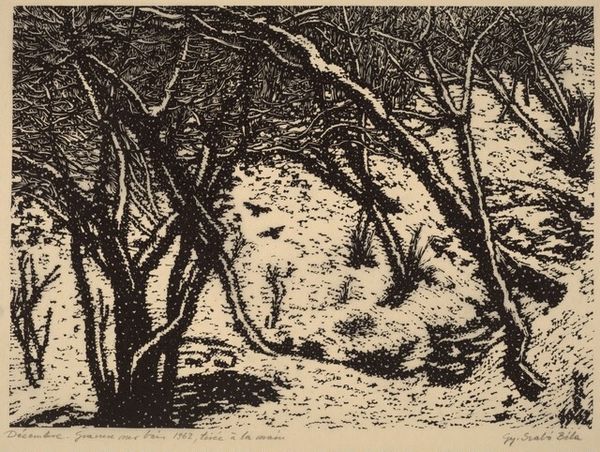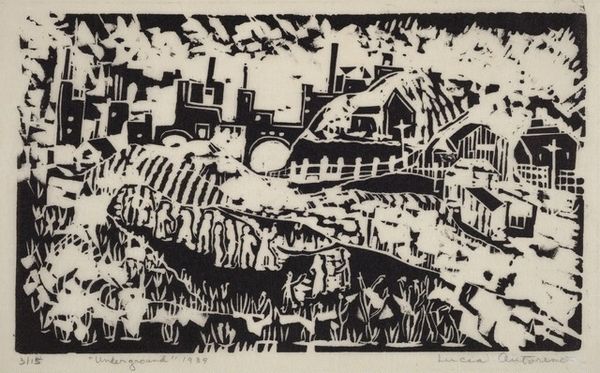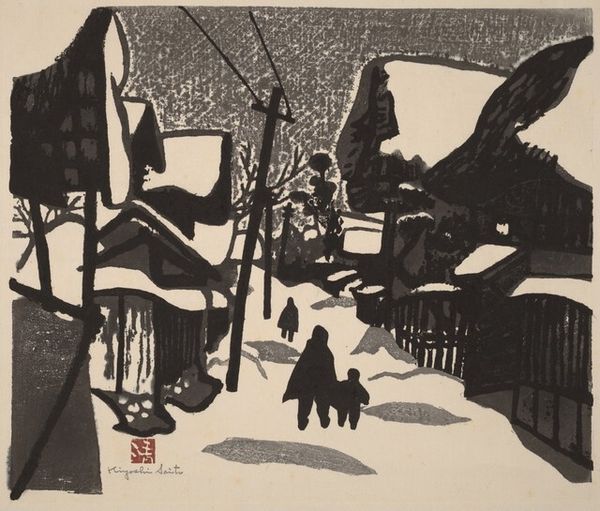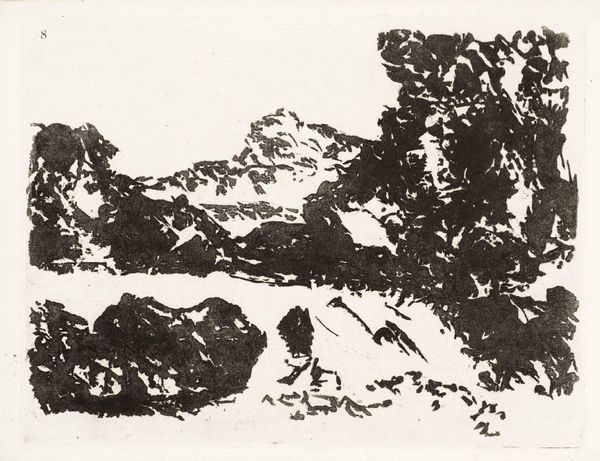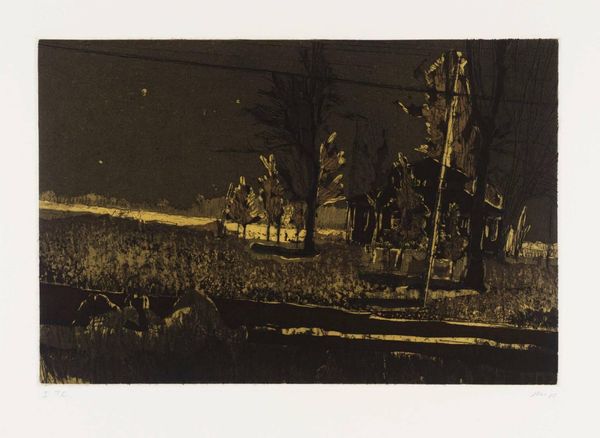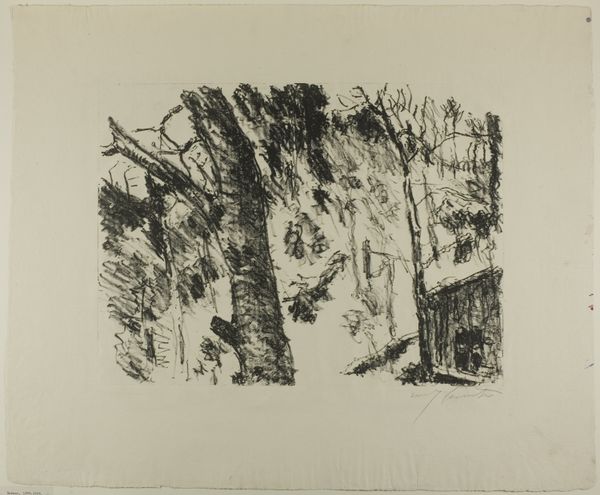
Dimensions: image: 275 x 400 mm
Copyright: © Peter Doig | CC-BY-NC-ND 4.0 DEED, Photo: Tate
Curator: Peter Doig's print, "Ski Hill", held here at the Tate, uses deceptively simple techniques to conjure up a mood. Editor: It feels isolated. The limited palette, that sort of sickly teal, and the high vantage point—it’s like observing from a distance, a slight disconnect. Curator: Absolutely. The printmaking process itself, with its layering and texture, mimics the experience of looking through falling snow. You can almost feel the chill. Editor: And notice how Doig renders the ski lifts, those industrial structures—they become skeletal, almost menacing against the backdrop of this seemingly untouched nature. It's the tension between the built environment and the natural one. Curator: True, and I find that tension really beautiful. It's not just about the joy of skiing, but about something more profound, a kind of existential stillness found in a landscape altered by human intervention. Editor: I agree. It makes you think about our role, not just as observers, but as agents constantly shaping the world around us, even in places that seem remote.
Comments
Join the conversation
Join millions of artists and users on Artera today and experience the ultimate creative platform.
tate 7 months ago
⋮
Grasshopper is Doig’s third print portfolio, following Ten Etchings 1996 (Tate P11471-P11480) and Blizzard ’77 1997 (Tate P11554-P11561). It was produced in an edition of thirty-five. Tate’s copy is one of seven additional proof sets. Each print is individually signed and numbered ‘TC’ (Tate copy) by the artist. The portfolio is presented in a pale yellow, hinged solander box bearing the artist’s name in dark brown. The title and colophon pages were designed by Peter B. Willberg and printed in dark green. The contents were printed at Hope Sufferance Press, London on 350gsm Zerkall paper and published by Charles Booth-Clibborn under his imprint, The Paragon Press. Colour etching involves a layering process sympathetic to Doig’s painting process of building up colours and image in many stages. The prints in Grasshopper were created using between one and three plates and a range of etching techniques. Variety in texture and tone was created with aquatint (a process for creating an even tonal field), open bite (a method in which unprotected areas of the plate are exposed to acid to produce a very light tone), deep bite (a process which results in very dark tones), spit bite (a method involving painting or splashing acid onto the plate resulting in painterly effects) and sugarlift (a process which allows the artist to paint marks that print rather than having to outline them negatively). The individual prints were originally untitled, but were titled by the artist on publication of Contemporary British Art in Print: The Publications of Charles Booth-Clibborn and his Imprint The Paragon Press 1995-2000 in 2001.
